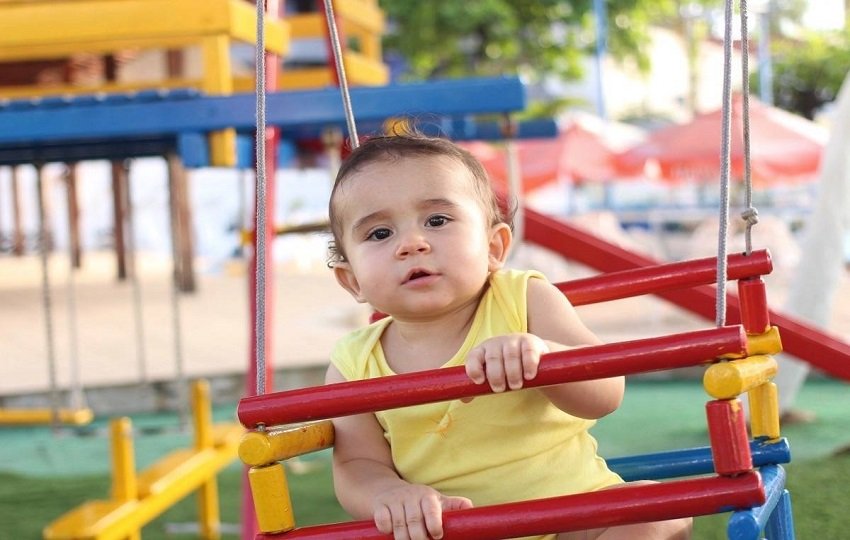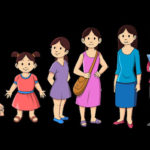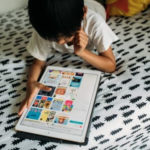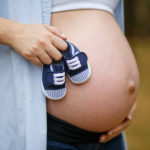Ready for the Outdoors
Why Outdoor Learning is Fun and Beneficial
Parents play a vital role in encouraging the children to go outdoors and play. The gift of outdoor play intertwined with the gift of nature and time spent together weave positive memories and provide holistic benefits for you and your child.
It’s easier nowadays to give young children an electronic toy/ tablet because it’s the latest thing and some are even used as a temporary baby sitter so they will stay put and you can be left in peace. Unfortunately, there are plenty of research indicating the negative effects of too much TV, and too much exposure to screen.
A researcher advised not to allow a child under three years of age to watch TV. American pediatricians also favor a total ban on screen time until at least 18 months.
Go outdoors, is what they say!
Define Outdoors
When we have babies and toddlers, our instinct is to keep them safe, dry, warm and comfy. Just like the way they were cared for during their 9-month stay in the womb. But, the moment they were pushed outside into the world, everything changes and the learning begin!
Some mothers can be a little too cautious. Some are adventuresome. Some mommies would not think twice sending their children outdoors where there are flying and crawling insects and innumerable forces of nature that could cause possible discomfort or harm. Some mothers would not mind as long as it’s relatively safe.
My mother is one of those ‘let’s just stay indoors, where it is safe!’ kind of mom. Now that I have kids on my own, we often go outdoors or go on trips. Their grandma would worry about the grand kids getting sick. I guess my mother is not really built for the outdoors.
Looking back, I may have missed so many things just because my learning environment has been confined within the limits of a classroom.
Science will back this up. There are children who learn best in the outdoors. The benefits of learning outdoors can cut across all age span and all types of learners. The very definition of the outdoors is outside, out there – outside a building, outside a classroom, in or into the open air, nature, and into the wild.
You’d ask what age will I let my baby go outdoors? When will a baby be ready? The answer is as soon as you – the parent – are able to! There’s no such thing as too young or too early.
Why the fuss – going outside?
Infants and toddlers learn how the world works through their senses. They soak up every noise, every sensation, every taste, and every experience. The outdoors can provide them the enjoyable sensory experience which is critical for their cognitive development.
During the first three years of their life, their brain synapses form at an incredible rate. Imagine how their synapses work double time when you expose them to a rich sensory environment. The coolness of the breeze, the foam of a beach wave, the texture of sand, the vibrant color of a flower, the different sound of chirping birds – the list is endless!
Outdoor experiential learning also aids early literacy and promotes science learning. It gives the young toddler who is just learning the words to verbalize what they have seen, what they have heard, felt and experience. When this happens, parents and caregivers show positive response and this social interaction also promotes social development.
Aside from cognitive and language development, a toddler’s physical development is developed through playing outdoors. The experts in child development say that the “window of opportunity” for gaining basic motor movements is from prenatal to five years of age. It is at this time that their brain gathers and stores information and they will act out these pieces of information through loco-motor movements. Since the outdoor is open and have varied elements that could stimulate their senses, they feel free to explore, practice gross motor skills for large muscle development and have unlimited contact with nature.
They will enjoy nature firsthand: the sunlight that provides a source of Vitamin D, the fresh air free from pollutants, the greenery that soothes the senses, the novelty that stimulates and motivates their learning. The things that children find outdoors – sticks, flower, soil, rocks, water, etc capture their attention and interest offer countless possibilities for play. The children’s positive encounter with nature also fosters their love for the environment.
Getting involved in games and activities with the kids in your life is a great way to encourage them to be more active – and the benefits of this can impact not just in their formative years but in their lifetime. Active children are less likely to develop obesity and cardiac problems. Parents who have an active lifestyle empowers the kids to have them too!
Tips for Bringing Your Toddler Outdoors:
Are you set to bring your toddler outside? Here are a few important tips to remember before hitting the door:
Your outdoor bag / backpack
Many parents prefer the convenience of a backpack diaper bag when especially when it comes to packing all the necessary things for the outdoors. It should have room for all the toddler paraphernalia at the same time your hands are free during the outdoor spree.
It’s important to pack everything the night before to avoid the rush and eventually forgetting something. Some parents have a ready checklist of the things to bring – which is the next tip
Checklist of things to bring.
Here’s a list of essential things but you are free to add/change accordingly:
- Snacks and water
When the tummy is not rumbly (hungry), then your tot is ready for the adventure. Pack plenty of his favorite snacks.
- Sunblock and insect repellent
Get acquainted with the location first before going there so you could anticipate what your child will need. In some outdoor space, your toddler might be exposed to direct sunlight so it’s important to have preventive measures to avoid sunburn. In some places, there might be insects, especially in forest areas. A tiny human whose bitten is no fun!
- Medicines and Basic First Aid Kit
If your child is already taking meds, then it’s the first one to pack in the kit. For your first aid kit, it’s best to buy the ready and handy one. It’s best to add calamine lotion for the itch and rash problems and antihistamine for kids.
- Change of clothes and diapers
Choose the best outdoor clothes for your kids (depending on what season will it be). If it’s the summer months, then choose clothes that are breathable and can protect from sun rays. A hat, sunglasses and a breathable footwear is also a good idea. Dress your toddler in snow suits, gloves, hats, and boots to go outside in the winter.
- Fold-able umbrella and raincoats
In case of weather changes, you are ready.
Ensure Safety by checking out the place before hand.
Check for ant hills, remove trash, sharp branches, tools, lawn equipment, and animal feces and the like. If it’s a playground, check the playground surface,and equipment and see if they are all in the best condition. Anticipate possible hazards.
Here are some ideas for outdoor activities for your kids.
Ideas for Outdoor Activities:
You may opt to go to the familiar neighborhood park, your own backyard, to grandparents’ farm to do an unstructured active play. It’s really up to you and there are loads of play ideas out there to choose from. It’s important for your child to satiate his/her sensory needs, get the heart pumping, the lungs expand, the glands sweat and muscles develop.
For a more adventurous and nature loving folks, there is now a growing popularity of forest schools where learning is basically encounter with nature. Your backpack diaper bag should also carry all the things needed for an outdoor activity – like a magnifying glass.
Here are fun ideas for outdoor activities:
- Have a scavenger hunt. Kids love collecting & picking things up. There are so many things to pick up & collect along your walk: pebbles, pine cones, leaves, feathers, acorns, twigs etc. Take a bag with you to take home all your treasures.
- Take a piece of paper & crayon with you to do bark rubbings or leaf rubbings.
- Hug a tree. Find a tree and give it a hug! What does it feel like?
- Mud and puddle splashing! (Get ready for one big mess!)
- I spy: animal watching and tracking animal footprints. How many different animals can you see?
- Natural music. Identify the different sound that they hear while outdoors.
- Natural art. Exploring and collecting woodland materials to make natural art
- Compare and contrast. Learning different sizes and textures of leaves and rocks
With these ideas for outdoor activities in mind, remember the importance of outdoor play in a natural environment in your child’s learning and development. The outdoors is just there waiting for your child to take advantage of the opportunities of learning.
Hope you liked the ideas for outdoor activities.
So, ready?
- Understanding Your Baby’s Cry: A Parent’s Mini Guide - June 23, 2025
- Bottle vs. Breastfeeding: What Works for You and Your Baby - June 18, 2025
- 10 Yoga Poses For Kids at Home: Benefits Of Yoga For Kids - June 12, 2025
- Parenting Guide to Child Development: Key Milestones from Birth to 10 Years - June 4, 2025
- Summer Vacation Plans Ideas with Kids - May 27, 2025
- Nutritious Dried Fruit Treats for Toddlers (16–24 Months) - May 25, 2025
- Importance of Screen Time Management for Kids - May 24, 2025
- The 6 Most Common Pregnancy Concerns First-Time Moms Have - May 23, 2025
- Top 10+ Summer Activities for Kids - May 15, 2025
- Busy Family Tips for Raising Healthy Smiles - May 2, 2025














